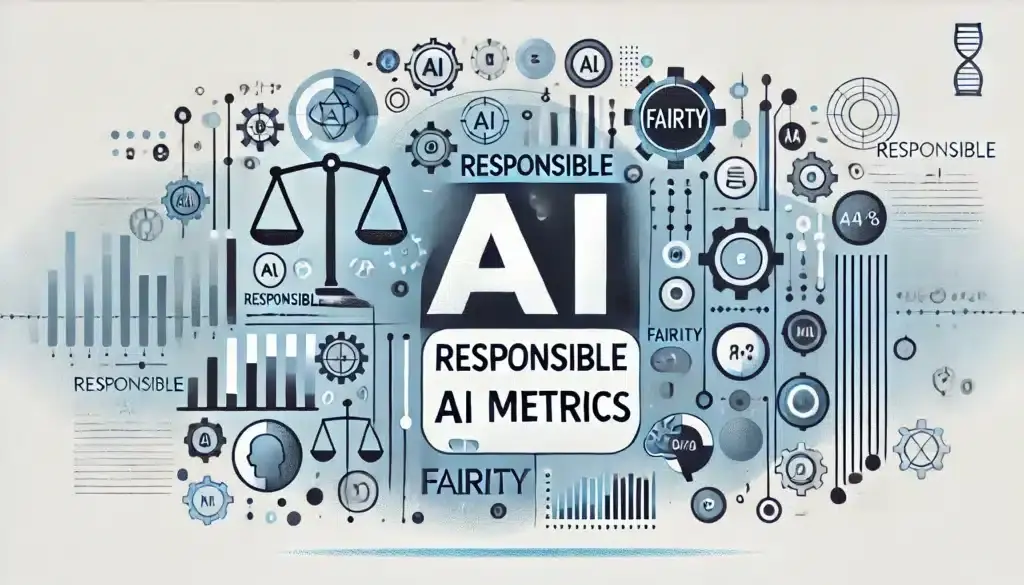Section 1 - Introduction: Why LLM Evaluation Has Become a Core Interview Topic
Just two years ago, most ML interviews revolved around training pipelines, feature stores, and hyperparameter tuning.
But with the rise of GPTs, Claude, Gemini, and Llama, the frontier has shifted.
In 2025, evaluating LLM performance has become one of the most discussed topics in ML and AI interviews, not because it’s new, but because it’s ambiguous.
Interviewers now care less about how to train models and more about how to reason about their quality, safety, and truthfulness.
a. Why This Topic Dominates Modern ML Interviews
Today’s top ML companies, from OpenAI and Anthropic to Meta, Cohere, and startups building LLM-based products, are asking candidates:
“How would you measure the quality of an LLM?”
“How do you detect and mitigate hallucinations?”
“What metrics go beyond accuracy for generative models?”
These aren’t academic questions, they’re practical.
Companies deploying language models to millions of users need engineers who can evaluate real-world reliability, not just test loss.
That’s why these questions have replaced classic “evaluate model performance” queries that once focused on F1 scores or ROC curves.
b. The New Skill: From Prediction Accuracy to Response Quality
Traditional supervised ML evaluation was binary, a prediction was right or wrong.
In LLM systems, the evaluation surface is multidimensional:
- Is the response factually correct?
- Is it contextually relevant?
- Is it helpful, safe, and stylistically aligned with the brand or user intent?
This shift from accuracy to alignment has created a new skill for interview candidates:
communicating qualitative reasoning with quantitative rigor.
Interviewers now want to see if you can handle subjectivity scientifically, using metrics, frameworks, and systematic analysis.
c. Why “Hallucination” Has Become the Keyword of 2025
No concept has become as loaded, or as misunderstood, in AI interviews as “hallucination.”
A hallucination isn’t just a wrong answer.
It’s a confident, fluent, and plausible fabrication, one that reveals how reasoning in language models can diverge from truth.
When you talk about hallucinations in interviews, interviewers are listening for two things:
- Conceptual depth: Do you understand why they happen (e.g., probabilistic next-token prediction)?
- Evaluation structure: Can you propose ways to detect, measure, or mitigate them?
d. What Interviewers Are Really Testing
When interviewers ask about LLM evaluation, they’re not just testing your technical recall.
They’re probing for reasoning maturity, the ability to balance metrics, context, and product goals.
They want to see if you can:
- Distinguish between offline metrics (BLEU, ROUGE, BERTScore) and human judgment metrics (helpfulness, truthfulness, coherence).
- Propose practical evaluation pipelines that scale.
- Discuss ethical and safety implications (bias, toxicity, hallucinations).
In other words:
They’re testing whether you can think like a machine learning product engineer, not just a data scientist.
e. How to Prepare for These Discussions
Before your next interview, do two things:
- Reframe your mental model:
Don’t think “accuracy”; think “reliability, relevance, and reasoning.” - Learn to structure qualitative evaluation answers.
Example:
“I’d evaluate an LLM using both automatic metrics for consistency and human-in-the-loop scoring for contextual quality. For hallucinations, I’d benchmark factual grounding against external references.”
That’s what great answers sound like, precise yet layered.
Check out Interview Node’s guide “Beyond the Model: How to Talk About Business Impact in ML Interviews”
Section 2 - The Three Layers of LLM Evaluation: From Metrics to Meaning
Most candidates approach LLM evaluation questions as if they’re just about “accuracy.”
That’s the first mistake.
Language models don’t just predict, they generate.
Their success depends on how human their responses feel, how consistent their reasoning is, and how grounded their claims are.
In interviews, when you’re asked,
“How would you evaluate an LLM’s performance?”
the best answers go beyond raw metrics.
They talk about layers of evaluation, from quantitative precision to human meaning.
Let’s break that down into a framework that you can use, and explain, in your next interview.
Layer 1: Objective Evaluation (Automatic Metrics)
The first layer of LLM evaluation involves objective, automated metrics, the kind you can compute at scale without human intervention.
They’re used during development and benchmarking phases, where speed and reproducibility matter.
Common Metrics to Mention
Here are the top metrics interviewers expect you to recognize:
| Metric | Purpose | Example Use Case |
| BLEU / ROUGE / METEOR | Compare generated text to reference text | Summarization or translation models |
| Perplexity | Measures how “surprised” the model is by real text | Language modeling / pre-training |
| BERTScore | Uses contextual embeddings to compare generated and reference sentences | Paraphrase detection, summarization |
| Exact Match / F1 | Measures overlap with ground truth answers | QA tasks |
| Toxicity / Bias Scores | Measure ethical or safety concerns | Chatbots, moderation systems |
These are your “foundation metrics”, the ones to name first to signal baseline understanding.
Check out Interview Node’s guide “Mastering ML System Design: Key Concepts for Cracking Top Tech Interviews”
How to Talk About Objective Metrics in Interviews
You can summarize this layer conversationally:
“At the base layer, I’d start with automated metrics like BLEU or ROUGE for text overlap and BERTScore for semantic similarity. These help quantify performance quickly, though they don’t always capture contextual quality.”
Then, pivot to nuance, interviewers love nuance:
“However, since language models can generate multiple valid answers, we often need higher-level evaluation methods to measure meaning and utility.”
That transition sets up your expertise for Layer 2.
Layer 2: Subjective Evaluation (Human-Centric Metrics)
LLMs are creative systems. They generate novel sentences, interpretations, or reasoning paths.
That makes subjective evaluation critical, because even if two outputs are syntactically different, they might both be valid.
This layer focuses on human judgment, relevance, and satisfaction, how well the model aligns with intent and usefulness.
Common Human-Centric Metrics
| Metric | What It Measures | Example |
| Helpfulness | Did the answer actually solve the user’s problem? | Chatbot or tutor systems |
| Factuality | Is the content correct and grounded in truth? | Research assistants, summarizers |
| Fluency | Is the response coherent, grammatical, and natural? | Text generation models |
| Diversity | Does the model avoid repetition or generic phrasing? | Creative writing, ad generation |
| Faithfulness | Is the output consistent with source material? | Summarization and QA systems |
How to Talk About Subjective Metrics in Interviews
A strong answer might sound like this:
“Once automated metrics establish a baseline, I’d integrate human-in-the-loop evaluation. For example, we can have human annotators score responses on helpfulness, factuality, and coherence using Likert scales or comparative ranking.”
Then, emphasize trade-offs:
“The downside is scalability, it’s costly and subjective, but hybrid frameworks that combine human scoring with automatic proxies are becoming standard.”
That shows you understand both practical constraints and real-world workflows.
Check out Interview Node’s guide “The Psychology of Interviews: Why Confidence Often Beats Perfect Answers”
Layer 3: Behavioral Evaluation (Holistic System Testing)
The third, and most important, layer tests behavior rather than outputs.
Modern LLMs are interactive systems, not static models.
They must respond appropriately to diverse prompts, edge cases, and adversarial inputs.
Behavioral evaluation asks:
- Does the model follow instructions reliably?
- Does it avoid hallucinating facts?
- Does it stay safe, fair, and consistent under pressure?
Common Behavioral Evaluation Dimensions
| Dimension | What It Evaluates | Example Test Prompt |
| Instruction Following | Does the model obey prompt constraints? | “Summarize in 10 words.” |
| Hallucination Rate | Frequency of unsupported or false statements | “Who was president in 1820?” |
| Consistency | Does it contradict itself across contexts? | “Is Pluto a planet?” → “Explain why.” |
| Safety & Bias | Does it produce harmful or biased outputs? | Sensitive question tests |
| Reasoning Robustness | Can it explain its own reasoning? | Chain-of-thought or critique tasks |
Behavioral metrics reflect user trust, the new gold standard for LLM quality.
Check out Interview Node’s guide “Explainable AI: A Growing Trend in ML Interviews”
How to Frame Behavioral Evaluation in Interviews
When discussing this layer, emphasize reliability and user experience:
“Beyond text similarity, I’d evaluate behavioral consistency, how well the model stays truthful and coherent across prompts. This includes measuring hallucination rates, safety compliance, and reasoning transparency.”
You can elevate your answer further by mentioning LLM-specific tools and benchmarks:
“Frameworks like TruthfulQA, HELM, and MT-Bench test models for truthfulness, reasoning, and safety in diverse scenarios.”
Interviewers appreciate that, it shows you’re aware of modern evaluation ecosystems, not just classic metrics.
Bringing It All Together: The “Metrics Pyramid”
If you want to summarize elegantly in an interview:
“I like to think of LLM evaluation as a three-layer pyramid.
- At the base: objective metrics like BLEU or BERTScore for efficiency.
- In the middle: subjective metrics like factuality and helpfulness for human alignment.
- At the top: behavioral metrics for trust, safety, and consistency.”
This “pyramid model” frames your answer visually and logically, an easy way to stand out in system design or applied ML rounds.
Key Takeaway
Great ML interview answers on LLM evaluation don’t sound mechanical.
They sound structured yet adaptive, balancing quantitative rigor with human understanding.
Your mantra should be:
“Measure what matters, accuracy for models, trust for humans.”
Because in the age of LLMs, the best engineers aren’t just optimizing loss; they’re optimizing credibility.
Check out Interview Node’s guide “How to Handle Curveball Questions in ML Interviews Without Freezing”
Section 3 - How to Talk About Hallucinations: Causes, Detection, and Mitigation
When ML interviewers bring up LLM hallucinations, they’re not testing whether you’ve memorized definitions, they’re testing whether you understand why they happen and how to reason about them.
Because in 2025, hallucinations are no longer an “edge problem.”
They’re the central reliability challenge of generative AI systems.
a. What Interviewers Mean When They Ask About “Hallucinations”
In interviews, when you hear the question:
“How would you handle hallucinations in large language models?”
They’re really asking three sub-questions:
- Do you understand why LLMs hallucinate?
- Can you detect and measure hallucinations systematically?
- Can you propose mitigation strategies without breaking creativity or usefulness?
The best answers flow through those three layers, cause → evaluation → prevention, in that exact order.
Check out Interview Node’s guide “How to Think Aloud in ML Interviews: The Secret to Impressing Every Interviewer”
b. Why Hallucinations Happen: The Root Causes
At their core, hallucinations aren’t “bugs.”
They’re statistical artifacts, a natural byproduct of how language models generate text.
Here are the main causes you can discuss in interviews:
Probabilistic Generation
LLMs predict the next most likely token, not the most factually correct one.
If multiple plausible continuations exist, the model may “choose” a fluent but false one.
Example:
Prompt: “Who discovered oxygen?”
→ Model says “Albert Einstein,” because his name often co-occurs with “discovery” and “science,” even though the truth is “Carl Wilhelm Scheele.”
Interview phrasing:
“Hallucinations occur when the model prioritizes linguistic likelihood over factual accuracy.”
Training Data Noise
Most pretraining datasets (Common Crawl, Reddit, Wikipedia) contain ambiguous or incorrect information.
The model internalizes those inconsistencies and regurgitates them as confident falsehoods.
“Because LLMs absorb patterns from noisy data, misinformation in the corpus can manifest as fluent hallucinations.”
Missing Context or Memory
If a prompt doesn’t contain enough grounding information, the model “fills in the blanks” by generating what seems plausible.
This happens in summarization, retrieval-augmented QA, or open-ended reasoning.
Alignment and Overconfidence
Even after alignment (e.g., RLHF or instruction tuning), models are trained to sound helpful and decisive.
This causes overconfidence, they prefer sounding sure over admitting uncertainty.
That’s why advanced LLM evaluation focuses not just on correctness, but also calibration, whether the model knows when it might be wrong.
Check out Interview Node’s guide “Explainable AI: A Growing Trend in ML Interviews”
c. How to Detect Hallucinations: Evaluation Frameworks
Now comes the second part, detection.
This is where most candidates go vague. But you can stand out by using clear frameworks and real evaluation methods.
Reference-Based Evaluation
You compare model outputs against ground truth datasets (like QA benchmarks).
Common examples:
- TruthfulQA: Measures factual accuracy across domains.
- FactScore / FActCC: Evaluates factual consistency in long-form generation.
- Q² (Question-Answering for Summaries): Checks factual alignment between summaries and source texts.
Interview phrasing:
“We can quantify hallucination rate by comparing generated claims against a trusted reference corpus using benchmarks like TruthfulQA or FactScore.”
Human Annotation
Human evaluators rate responses for factual grounding, reasoning soundness, and self-consistency.
This can involve Likert scales or binary “hallucinated / factual” tags.
“For open-ended tasks, human-in-the-loop evaluation remains the most reliable way to detect hallucinations, though it’s expensive and subjective.”
Retrieval-Based Verification
In real-world applications, hallucination detection often happens through retrieval pipelines.
Models are asked to cite their sources, or responses are cross-checked against external databases.
Example:
“For factual questions, we can rerun the response as a query to a search or knowledge base and flag inconsistencies.”
That’s how enterprise systems (like ChatGPT with browsing) mitigate real-world misinformation.
Self-Consistency and Cross-Model Checking
Advanced frameworks evaluate consistency by comparing multiple generations of the same prompt.
If outputs diverge drastically, it indicates unreliability.
Some systems even use LLM-as-a-judge approaches, letting one model evaluate another.
“Self-consistency checks or cross-model evaluations can approximate hallucination probability by measuring answer variance.”
This phrasing signals you understand evaluation at scale.
d. How to Mitigate Hallucinations: Design and Alignment Strategies
After detection, interviewers often ask:
“What would you do to reduce hallucinations in a deployed model?”
Here’s how to respond systematically in three tiers.
Data-Level Solutions
- Curate high-quality data: Filter low-trust domains and contradictory sources.
- Ground data with citations: Add structured factual data (e.g., Wikidata, scientific corpora).
- Balance domains: Avoid overrepresentation of speculative text (e.g., fiction, opinions).
“Improving training data fidelity reduces hallucination frequency from the root.”
Model-Level Solutions
- Retrieval-Augmented Generation (RAG):
Use external databases at inference time to fetch verified facts.
“RAG architectures let models ‘look up before they speak,’ reducing unsupported claims.”
- Confidence Calibration:
Train models to express uncertainty (e.g., “I’m not sure”) when prediction entropy is high. - Chain-of-Thought Verification:
Use reasoning traces that can be audited or post-checked for logical validity.
Check out Interview Node’s guide “MLOps vs. ML Engineering: What Interviewers Expect You to Know in 2025”
Output-Level Solutions
- Post-Processing Verification:
Run generated responses through fact-checking APIs or LLM-based verifiers. - Human-in-the-Loop Editing:
Allow domain experts to validate outputs before publishing in high-stakes systems. - Reinforcement Learning from Human Feedback (RLHF):
Iteratively fine-tune models to prefer truthful responses.
“Most real-world mitigation systems combine retrieval grounding, calibration, and post-hoc verification, no single method is perfect.”
That phrasing demonstrates practical realism, exactly what senior interviewers look for.
e. How to Discuss Hallucinations in an Interview Answer (Structure)
When asked directly, follow this 3-part reasoning framework:
Step 1: Define clearly.
“Hallucination refers to fluent but factually incorrect responses generated by an LLM.”
Step 2: Explain causes.
“They occur due to probabilistic token prediction, noisy data, or missing grounding.”
Step 3: Propose mitigation.
“We can reduce them through retrieval grounding, human evaluation, and calibration-aware training.”
Here’s a sample full-length answer (interview-ready):
“Hallucinations are confident but false generations. They arise because LLMs optimize for linguistic likelihood, not factual truth.
To detect them, I’d use TruthfulQA or retrieval-based fact-checking pipelines.
To mitigate them, I’d combine RAG for grounding, RLHF for preference alignment, and uncertainty calibration to reduce overconfidence.”
That’s a 60-second, senior-level response, concise, structured, and precise.
f. Advanced Talking Point: The Hallucination - Creativity Trade-off
If you want to impress deeply, add this nuance:
“Reducing hallucinations too aggressively can also reduce creativity. There’s a trade-off between truthfulness and expressiveness, especially in generative domains like writing or ideation.”
This single line demonstrates engineering judgment, a hallmark of experienced ML practitioners.
Key Takeaway
Hallucinations aren’t a failure, they’re a signal.
They remind us that LLMs are language generators, not truth engines.
In interviews, don’t just say you can “fix” hallucinations.
Show that you understand their origin, measurement, and mitigation, in balance with model usefulness.
“In evaluating LLMs, our goal isn’t perfection; it’s trustworthiness under uncertainty.”
Check out Interview Node’s guide “From Model to Product: How to Discuss End-to-End ML Pipelines in Interviews”
Section 4 - How to Communicate LLM Evaluation Frameworks in Interviews
Mastering the technical side of LLM evaluation is one thing, but explaining it clearly, under time pressure, is what wins interviews.
In most ML interviews today, your success depends not just on what you know, but on how you reason aloud.
When asked about model evaluation or hallucinations, your job is to structure your thoughts, show depth, and connect technical insight to product relevance.
Here’s how to do that step-by-step.
a. Recognize When the Question Is About Evaluation
LLM evaluation questions don’t always sound obvious.
Sometimes, they’re wrapped inside broader prompts like:
- “How would you decide if your chatbot is performing well?”
- “How do you know your model is reliable?”
- “What are the limitations of current LLMs?”
All of these are invitations to demonstrate evaluation literacy.
Start your answer by reframing the question, it signals structure and confidence.
Example:
“That’s a great question. I’d approach model performance along three dimensions, objective accuracy, subjective helpfulness, and behavioral reliability.”
That simple opening tells interviewers: you think systematically.
b. Structure Your Answer in Three Layers
Use the “Metrics → Meaning → Mitigation” framework to sound organized and insightful:
Metrics:
Start with measurable signals.
“I’d use BLEU or BERTScore to quantify text similarity and factuality benchmarks like TruthfulQA to assess grounding.”
Meaning:
Add context by explaining how metrics connect to user trust.
“Metrics are useful, but for deployed LLMs, perceived reliability and coherence matter more. We need human-in-the-loop scoring to assess helpfulness.”
Mitigation:
End with how you’d improve performance.
“To reduce hallucinations, I’d integrate retrieval augmentation and calibrate confidence thresholds.”
This framework works beautifully in both technical and behavioral rounds, it keeps your reasoning crisp and layered.
c. Use Real-World Framing in Your Answers
Interviewers love when candidates ground their answers in product impact.
For example:
“When evaluating an LLM-based customer support bot, I’d track factual accuracy, latency, and user satisfaction. Even if BLEU scores are high, hallucinations can still erode trust, so I’d measure truthfulness explicitly.”
That phrasing connects model performance to business reliability, a major plus for senior or cross-functional ML interviews.
Check out Interview Node’s guide “Beyond the Model: How to Talk About Business Impact in ML Interviews”
d. Demonstrate Awareness of Trade-Offs
Strong candidates always mention trade-offs, it signals real-world thinking.
For instance:
“Reducing hallucinations too aggressively can hurt creativity or responsiveness. It’s about balancing factual precision with natural language fluency.”
Or:
“A perfectly truthful model might still frustrate users if it constantly hedges with disclaimers, so evaluation has to consider context.”
These small nuances make you sound like someone who’s worked with production-grade systems.
e. Use the STAR Method for Behavioral Questions
If you’re asked something like:
“Tell me about a time you improved model quality,”
use STAR (Situation, Task, Action, Result):
“I worked on a generative summarizer that often hallucinated numbers. I added a retrieval step before generation and a verification layer after. Hallucinations dropped by 30%, and user trust scores improved in A/B testing.”
That’s the perfect mix of technical and outcome-oriented communication.
f. Avoid Overcomplication
Many candidates lose interviewers by diving too deep into equations or benchmarks.
Instead, think clarity > complexity.
An ideal summary answer is:
“I’d evaluate an LLM across three levels:
- Automated metrics for reproducibility,
- Human ratings for helpfulness,
- Behavioral testing for truthfulness and safety.
Then I’d mitigate hallucinations using RAG, calibration, and post-hoc verification.”
Short, structured, confident, exactly how interviewers expect senior ML candidates to speak.
Key Takeaway
Interviewers don’t expect you to memorize every LLM metric, they expect you to reason with purpose.
If you can talk about model quality and hallucinations through the lens of trust, reliability, and impact, you’ll stand out instantly.
“In LLM interviews, clarity beats complexity.
Structure your thoughts, show understanding, and always connect performance back to human value.”
Section 5 - Conclusion & FAQs: Evaluating LLM Performance with Confidence
In modern ML interviews, “evaluation” no longer means checking loss curves or accuracy metrics.
It means demonstrating your ability to reason about complex, fuzzy systems, like LLMs, that blend creativity with uncertainty.
If you can confidently discuss how to measure, explain, and mitigate hallucinations, you’re signaling to interviewers that you think beyond algorithms, you think like an applied ML leader.
Why This Topic Is Now Central to ML Hiring
The most valuable ML engineers today aren’t the ones who just build models, they’re the ones who know how to evaluate and trust them.
As LLMs power customer-facing systems, research assistants, and enterprise workflows, companies prioritize engineers who can:
- Quantify trustworthiness
- Detect failure patterns early
- Communicate uncertainty with clarity
That’s exactly what LLM evaluation skills represent, a blend of scientific rigor, system-level awareness, and human understanding.
Check out Interview Node’s guide “MLOps vs. ML Engineering: What Interviewers Expect You to Know in 2025”
How to Leave a Lasting Impression in Interviews
When the interviewer asks about evaluation or hallucinations, your goal isn’t to sound like a researcher, it’s to sound like a decision-maker.
You don’t need to have implemented every metric.
You just need to show that you can:
- Frame the problem clearly (“LLM hallucinations arise from probabilistic language prediction”).
- Suggest a practical solution (“Use retrieval-augmented generation and post-hoc verification to ground outputs”).
- Connect it to outcomes (“This improves factual reliability and user trust”).
In short, clarity > completeness.
That’s the hallmark of strong ML communication.
FAQs: LLM Evaluation and Hallucination Questions in ML Interviews
1. What does “evaluating an LLM” actually mean in interviews?
It means assessing how you measure model performance beyond accuracy.
Interviewers expect you to talk about quality, coherence, and truthfulness, not just metrics like BLEU or ROUGE.
Use terms like helpfulness, factuality, and behavioral consistency.
2. How do I define hallucinations simply but accurately?
Say:
“Hallucinations are confident but incorrect outputs generated by LLMs due to probabilistic next-token prediction and lack of factual grounding.”
Short, correct, and interview-safe.
3. Why do interviewers care so much about hallucinations?
Because hallucinations are the biggest obstacle to deploying LLMs safely in production.
They test whether you understand both the limitations and practical realities of AI systems, a critical hiring signal for senior engineers.
4. How should I explain hallucination causes without sounding overly academic?
Use plain reasoning:
“They happen because the model is trained to sound plausible, not to verify facts. Noisy data and lack of retrieval grounding make it worse.”
That’s clear and technically sound.
5. What are the most important metrics to mention when evaluating LLMs?
Mention a mix of automatic and behavioral metrics:
- BLEU / ROUGE for overlap
- BERTScore for semantic similarity
- TruthfulQA and FactScore for factuality
- Human ratings for helpfulness, coherence, and faithfulness
Always emphasize why each metric matters.
6. How do I explain evaluation trade-offs?
Say something like:
“Reducing hallucinations increases truthfulness but may limit creativity. Evaluation must balance factuality with fluency, depending on the product.”
That shows judgment, something interviewers love.
7. What’s the best way to talk about mitigation strategies?
Break it into three layers:
- Data-level: Clean and ground training data.
- Model-level: Use retrieval-augmented generation or confidence calibration.
- Output-level: Apply post-hoc verification and human-in-the-loop validation.
Structure always beats jargon.
8. Should I bring up RLHF or retrieval-augmented generation?
Yes, selectively.
Mention them as mitigation frameworks, not buzzwords.
For example:
“RLHF aligns models to human preferences, while RAG grounds responses in verifiable data.”
This shows you understand purpose, not just terminology.
9. How do I connect LLM evaluation to business outcomes?
Frame it in terms of trust, safety, and user satisfaction.
For instance:
“Reducing hallucinations improves brand reliability and reduces human review costs.”
That’s how you convert technical insight into impact.
10. How do I demonstrate I’ve worked with evaluation frameworks even if I haven’t built one?
Say:
“I’ve studied frameworks like HELM and TruthfulQA and understand their design principles, evaluating factual grounding, safety, and coherence.”
That signals intellectual familiarity without overclaiming.
11. What are common pitfalls to avoid when discussing LLM evaluation?
- Over-focusing on metrics, ignoring user trust.
- Using terms like “accuracy” too loosely.
- Ignoring hallucination trade-offs.
- Sounding theoretical without product connection.
Always balance technical and practical reasoning.
12. What’s a strong 30-second summary answer to ‘How would you evaluate an LLM?’
“I’d evaluate an LLM on three layers:
- Objective metrics like BLEU and BERTScore for baseline quality,
- Human evaluation for helpfulness and factuality,
- Behavioral tests for hallucination rate and consistency.
Then, I’d mitigate issues with RAG and calibration to improve trustworthiness.”
It’s concise, structured, and covers everything an interviewer needs to hear.
Key Takeaway
LLM evaluation isn’t about getting the “right” metric, it’s about demonstrating that you understand how to make AI systems trustworthy, interpretable, and user-aligned.
In ML interviews, this skill distinguishes coders from engineers, and engineers from leaders.
“Anyone can train a model.
The best engineers can explain when to trust it.”






